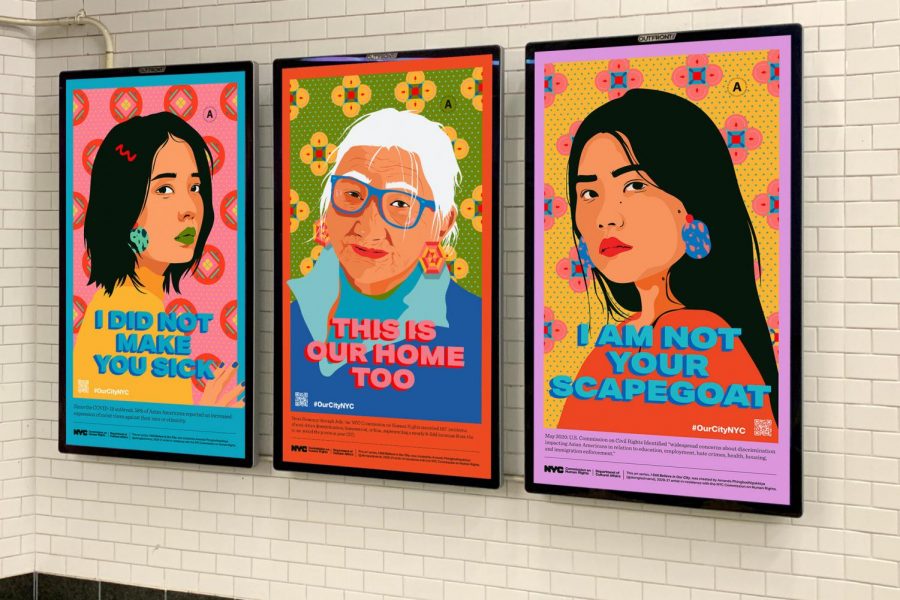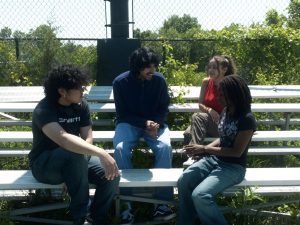Asian Americans Are Not America’s Scapegoat
March 24, 2021
While thousands of red and blue flags fly at half staff in honor of the eight individuals, six of whom were women of Asian descent, killed at two massage parlors in Atlanta, history is continuing to repeat itself. It’s almost two months since 84 year old Vicha Ratanapakdee died from his injuries after being violently attacked while out taking a walk in California, and it’s been only a year since an Asian-American father and two young sons were stabbed while shopping in a Sam’s Club in Texas, leaving them with visible scars across their faces and back.
Over the past few months, more reports of anti-Asian hate incidents and crimes have been slowly poking through the surface of mainstream media as organizations such as STOP AAPI Hate and Standing Against Hate continue to collect and report anonymous data. Across the nation, Asian Americans are being attacked and scapegoated for the spread of the COVID-19 virus. Many feel that much of this backlash has come from the Trump Administration, most notably former President Trump. After referring to the coronavirus as the Chinese virus in a tweet back in 2020, Trump unleashed a wave of hostility and aggression that has both intensified and risen as many continue to wrongly associate the AAPI community with the current pandemic.
Paint Branch senior Lindsay Gantman has grown up surrounded by mostly Caucasians and has “never been truly worried about harassment.” However, since the beginning of the pandemic, she notes that she’s had a “uniquely disappointing experience” where she’s been called “‘Covid’ and ‘Kung-Flu’” in parking lots in the local area. Gantman recalls feeling “pretty awkward and uncomfortable” in the moment.
Yet, the creation of false narratives to oppress and blame Asian Americans is nothing new to the United States.
Take the model minority myth, which operates on the stereotypes that all Asian Americans are successful and have overcome discrimination. Often, the myth is deemed as being a ‘positive stereotype’ because it primarily associates prosperity and hard work with Asian Americans. However, this myth is toxic and draining on the community. The AAPI community consistently faces pressure to mold themselves into this narrative and conform to the qualifications deemed ‘desirable of a minority’ by the power structure.
Not only does this myth encourage nonresistance to racism, it continuously erases the injustices done to Asian Americans and the individual experiences many face in America. As a result, many wrongly believe that the AAPI community is free from racism and they don’t experience any hardships. Yet, there are a large number of Asian Americans who have experienced microaggressions, attacks, and bias since the first Asian immigrant arrived and it’s still happening today — it’s just that society never talked about it. Back in 2018, Victoria Tran from the Urban Institute reported that “39.4 percent of Burmese Americans” lived “below the federal poverty line” in the United States. Thus, it is precisely this myth that has helped foster tension between Asian Americans and other minority groups as a way to divide them, preventing any possible cooperation and chances of changing a systematically racist country (which would have been largely beneficial to those in power back in the day).
America has long had a tradition of anti-Asian violence and discrimination, but much of it is not known by the general public. According to Slate writer Rebecca Onion, in 1899, Chinese residents were wrongly stereotyped and blamed for a bubonic plague in Hawaii. Many were forced to take public showers, throw out their personal items, and watch their homes be sprayed with carbolic acid. In the end, officials burned down Honolulu’s Chinatown, which left thousands of people with no home.
While the Japanese internment camps during World War II and the Chinese Exclusion Act (1882) are fairly well-known examples of anti-Asian policies, few know about other tragic events such as the death of Vincent Chin. Thirty eight years ago, the 27 year old Chin was beaten to death with a baseball bat and in the end, his murderers walked away with only a mere fine and few years of probation. His murder is known for having prompted waves of Asian Americans to march and protest against the injustice committed not only against Vincent Chin, but the entire community.
It is this lack of awareness of these and other stories that contributes to the absence of the Asian American community in the national race conversation, along with other minorities. This unintentional exclusion can cause people to forget about Asian Americans, leaving them to further disappear into the already overlooked folds of American society. Paint Branch junior Minh Le points out that it’s “sadly normalized for Asian people to be picked on and it’s brush[ed] off easily.” While she is glad that there has been more attention on the issue, Le also believes that more people, especially those who love Asian culture, should be “speaking against these problems.” This isn’t a black and white country, and the discussions about race and other nuances of identity need to reflect that.
As the number of reported anti-Asian hate incidents reaches about 3,800 reports according to the STOP AAPI Hate database, more Asian Americans are fearing for their lives. Whether relaxing on a park bench, shopping in a grocery store, or even walking to one’s own apartment building, it can feel as if nowhere is safe. It takes only a few seconds to make the difference between a racial slur and a deadly event.
Across the nation, many local activists and officials have taken the issue into their own hands with various initiatives. In California, groups like Compassion in Oakland are recruiting volunteers to walk with seniors through the neighborhood so they won’t be alone. In Connecticut, some lawmakers are involved in an ongoing effort to require Asian American Studies in the state curriculum. Initiatives such as these are only a few of the ways people can reach out and help Asian Americans.
The Asian American community isn’t some tool to use to invalidate the realness of racism they, and other minorities, experience in this country. It’s time to stop pressuring millions of Asian Americans to fit into a false narrative and start addressing the individual struggles that are overshadowed by that harmful myth. It’s time to stop ignoring the hidden folds in American history, and start teaching what happened to the residents at the Chinese Massacre of 1871 and how the Immigration Act of 1924 harmed Asian immigrants. These dark moments in history and many others are an important part of this country’s past, and if we don’t acknowledge them, how can Asian Americans and the rest of this nation be truly free?
The bottom line is that Asian Americans aren’t some sort of punching bag for the pandemic. They are Americans, and it’s way past time the country upholds this fact.













































